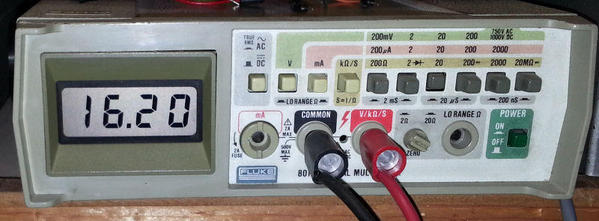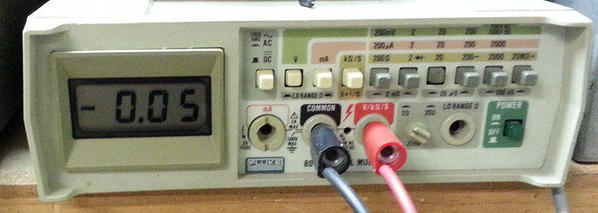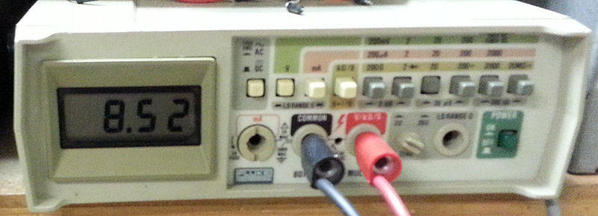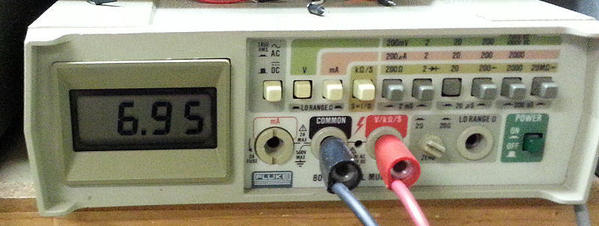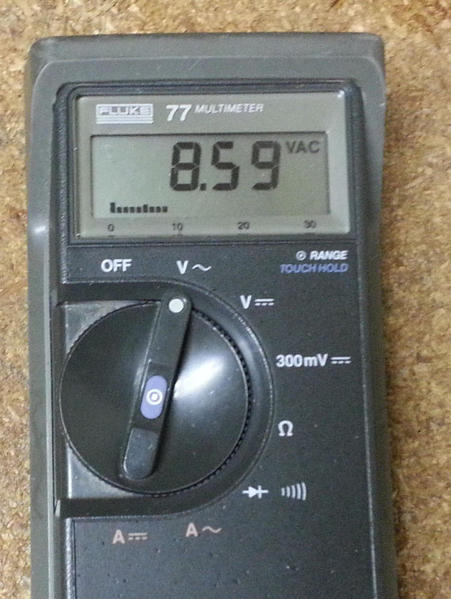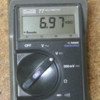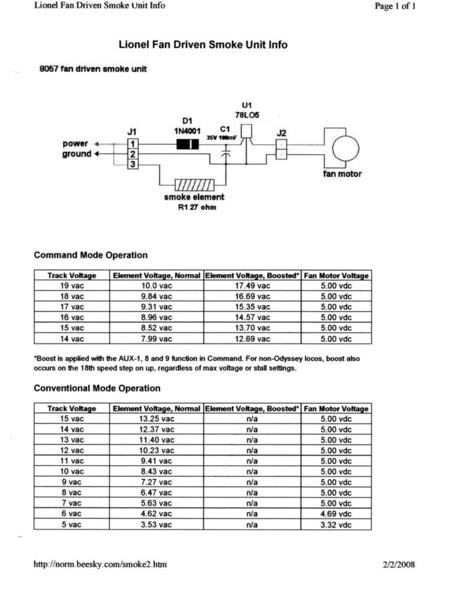John,
Your technical perspective has value. Yes, when you put the smoke output on a scope and measure the waveform you see what is being sent out of the pin out.
Now, take your technical perspective and explain it to the 1000's of operators in the marketplace who have very "loose" understanding of differences between AC and DC current, let alone how volts, amps and wattage works.
Sure, you can present the technical info to the masses, but in the long run, in my experience, it only serves to confuse the heck out of the user. Yes, this industry has a lot of technically savvy participants, but most, if not the vast majority of them simply do not understand the complexities involved in what really happens inside their trains. Furthermore, explaining the technical side in an easy to understand way is what attracts folks to the hobby.
Having spent the better part of 10 years in the aftermarket upgrade business before coming on board at Lionel and interacting with thousands of users I learned that folks first and foremost seem to know what their trains do, out of the box. Some want to know what they "can do" and even some (albeit a very small percentage) want to know exactly how it does it. We can confuse the vast majority with all kinds of technical jargon and scope readings (I typically leave this for engineers! LOL) or we can explain it in relative layman terms that are easy to understand and the customer feels good walking away, having a basic understanding of how something works.
If you go back and view the videos we have produced within Lionel the focus is on educating the user. I do my best to leave the technical jargon out, except when absolutely necessary. Ask the consumer who has watched the video if they learned anything, most will say they have, because the information is presented in an easy to understand presentation of the facts with familiar terms that they understand (or can at least relate to). That is the true goal.
We could take the "how" to a whole new level using scopes, graphical voltmeters, etc. but most of the consumer base does not have access to these types of devices. As such catering to this genre of consumer, while perhaps worthwhile in your mind, is not the target audience or expertise of the larger audience we are trying to reach. If you want the technical side of the "how" I can almost assure you my videos will be of little help to you. However, if you like the hobby and enjoy your products and want a basic (or in some cases, a more thorough) understanding of the "how" (or as I like to call it, the "magic") of what our products do; to increase your overall enjoyment of the hobby, then yes, our videos will provide that to you, in a manner in which the vast majority of folks understand.
OK, back to the topic of the R2LC output. If you measure the voltage with a digital or analog meter (specifically pins 5/6 for AC hot and pins 3/4 for ground) you will read 12VAC. While holding down 9 you will see 14VAC (this is providing you have used auxiliary code 8 in programming and have 18VAC applied to the track). Which is a very simple way of determining whether the output of the R2LC is functional or has a problem. 98% of the folks who attended the training classes we conducted at Lionel do not have access to a scope, hence the reason the training was based solely on the use of a Fluke Model 179 Digital (True RMS) voltmeter. The wave form output serves very little value in the troubleshooting/repair world. A technician needs to know if it works or it doesn't. If it doesn't work at the output then replace it. If it does, then the problem is somewhere downstream and the R2LC can be passed over.
I am sure you will find all kinds of cool stuff on a scope regardless of whose electronics you scope, but almost everyone wants to fix the problem, not try to formulate why a wave form is done this way or that way. Personally I have no interest in the waveform. Does it work as intended or does it not? Can it be improved without rewriting code? These are the topics of my questions when troubleshooting a product or teaching a class, nothing to do with peak voltage, etc. (As I explained to every participant in our training classes; Lionel has people who make way more money than I do who understand what happens inside the PCB, my (our) world begins where all the magic terminates; the outputs of those PCB's.)
One more way to look at it; a new customer walks into a store looking to get started in a hobby (or an existing customer who wants to expand the functionality of their trains). Are they likely to bite if you start pulling out digital scopes and prodding pins all over the inside of the trains showing them what the waveform looks like? Or are they more likely to bite showing them what the product is capable of doing and helping them understand how to get the most out of all the features their products have to offer?
This is the logic I apply to my approach. I try to steer away from the "technical" whenever possible, when creating learning videos for our customers.
Thanks,
Mike Reagan
Lionel
![]() Note that I never said he lied, that implies you have the facts and distort them. I doubt he did that. However, if we had had this conversation before York, I would have popped the question. Unless he can explain the actual measurements I get looking at the smoke output, I'm still not buying the 12V AC, because that simply isn't what's happening. Watching the video isn't going to change the facts, that particular statement is demonstrably incorrect, given the actual measurements presented.
Note that I never said he lied, that implies you have the facts and distort them. I doubt he did that. However, if we had had this conversation before York, I would have popped the question. Unless he can explain the actual measurements I get looking at the smoke output, I'm still not buying the 12V AC, because that simply isn't what's happening. Watching the video isn't going to change the facts, that particular statement is demonstrably incorrect, given the actual measurements presented.



